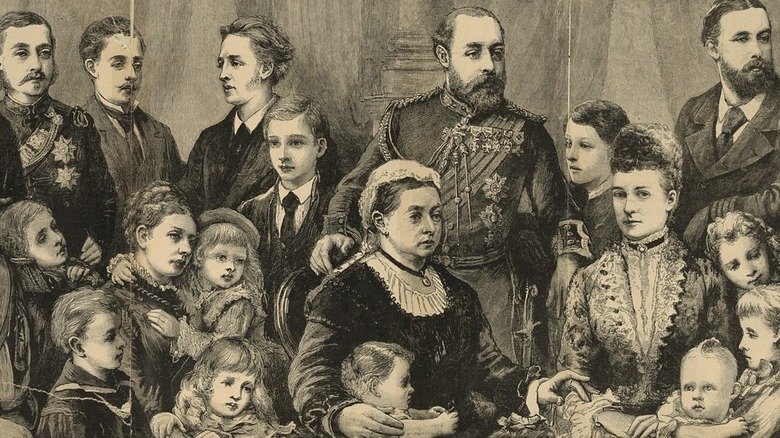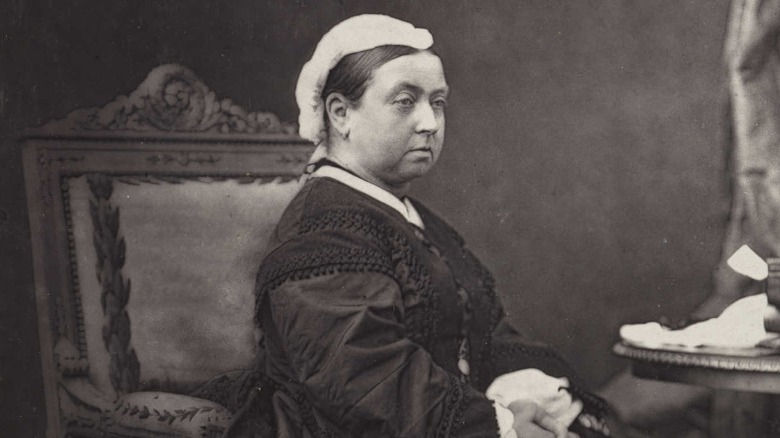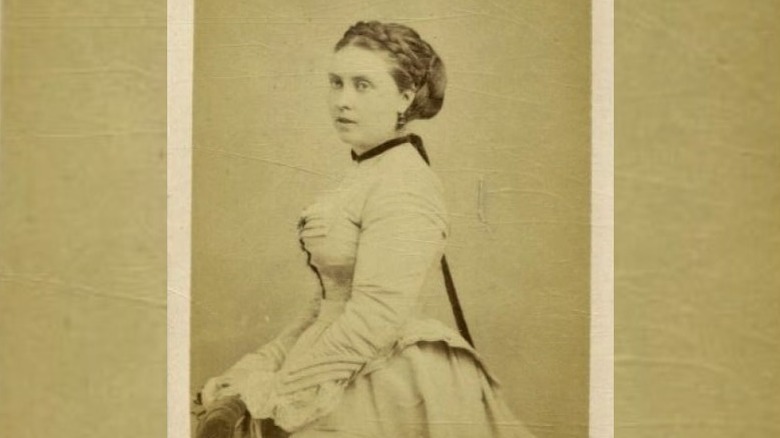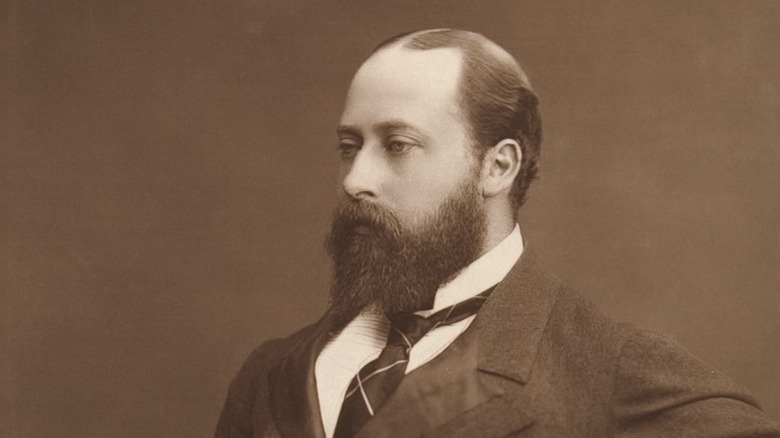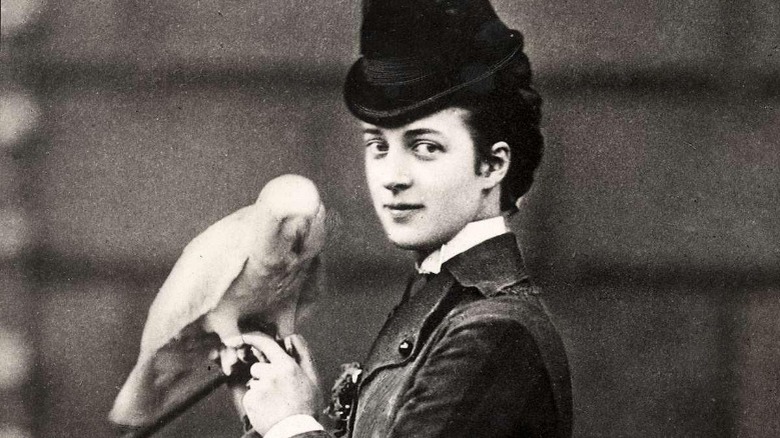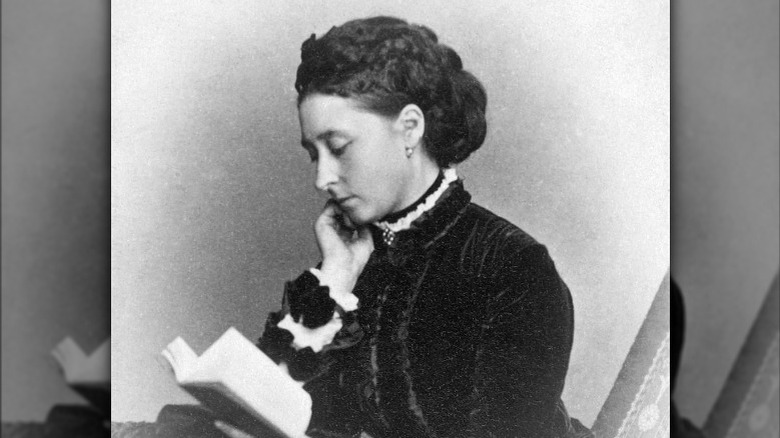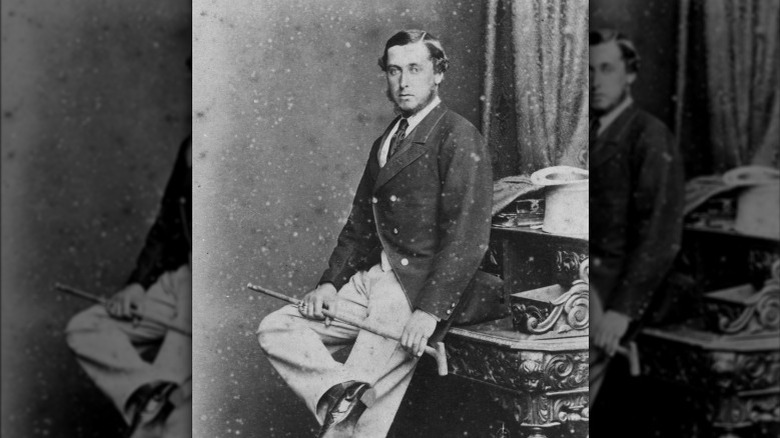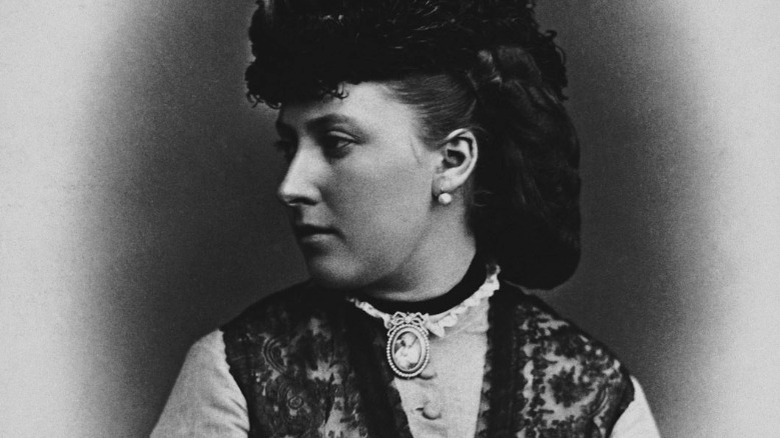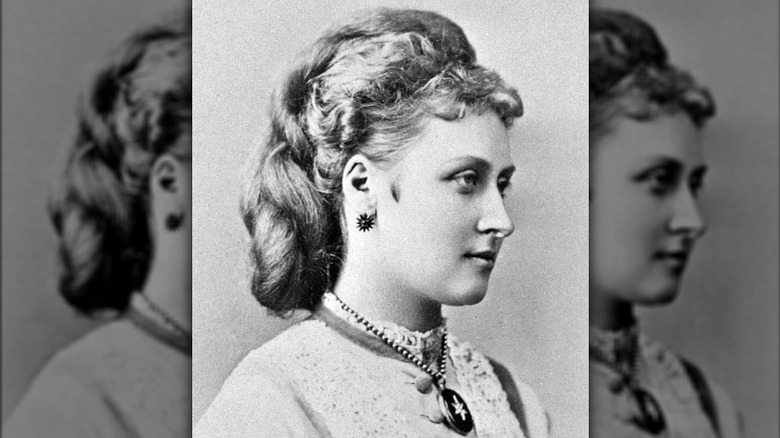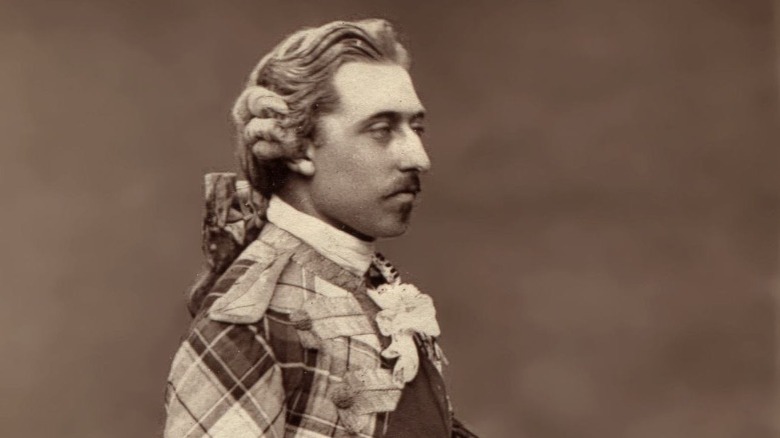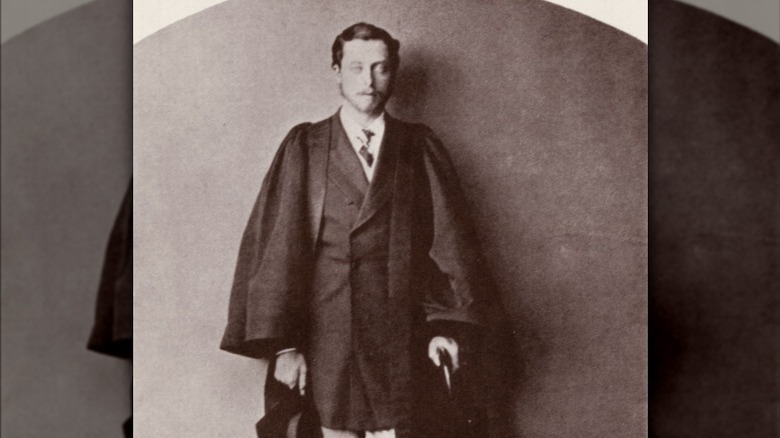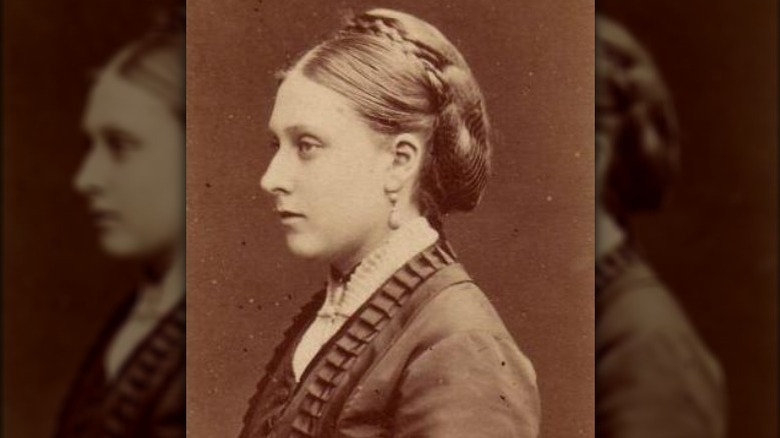What The Royal Family Looked Like 150 Years Ago
The Victorian Era overlapped with much of the Industrial Revolution and was a time of enormous progress and rapid changes. One of those changes was the invention of photography. While men and women had been experimenting with various ways of capturing images for decades, to greater or lesser success, it was in 1839, just two years after an 18-year-old Queen Victoria came to the throne, that the announcement of the invention of photography shocked the world (per the National Gallery of Art).
As the 19th century wore on, photography became easier, cheaper, and delivered much higher quality images. Soon, photographs were everywhere. And this meant that those in Britain, and in the far-flung British colonies around the world, could view detailed, recent images of their queen on a regular basis. Queen Victoria and the rest of the royal family sat for many, many photographic portraits over the years. While there is not a single photographic image of William IV, Victoria's immediate predecessor, there are hundreds of her. There are even motion pictures of the queen, captured towards the end of her life.
The difference it made for British subjects going from seeing one formal, idealized portrait of the monarch once a decade or so, to seeing photos of the royal family on a regular basis, cannot be overstated. Suddenly, the royal family was real. And 150 years ago, in the early-to-mid 1870s, their photos were everywhere. Here's what the British royal family looked like around 150 years ago.
Queen Victoria
By the 1870s, Queen Victoria (pictured here around 1870, aged 51) had been on the throne for over 30 years. In 1861, her husband Prince Albert had died, and her reaction was to mourn obsessively and completely withdraw from public life. After a decade of this isolation, her subjects were wondering what the point of a queen was if she was going to hide away in her various castles and never be seen by the people funding her lifestyle. According to English Heritage, in 1871, an anonymous pamphlet, basically the 19th-century version of trolling, not-so-subtly pointed out that Victoria made a lot of money off the country she had abandoned and maybe it was time to rethink this whole "having a monarchy" thing.
However, an assassination attempt by Arthur O'Connor in 1872 was unrelated to the growing republican sentiment in Britain, per the Royal Borough of Windsor. The teenager threatened the queen with a broken gun, hoping she'd release Irish political prisoners.
That same year, Victoria's older half-sister, Feodore, from her mother's first marriage, died aged 64. The two were close, and the queen was completely distraught. She wrote in her diary, "My own darling, only sister, my dear excellent, noble Feodore is no more! ... I stand so alone now, no near & dear one nearer my own age, or older, to whom I could look up to, left! All, all gone! ... She was my last near relative on an equality with me, the last link with my childhood & youth" (via History Extra).
Victoria, Crown Princess of The German Empire
Queen Victoria and Prince Albert's first child had been a girl, whom they named after her mother. To avoid confusion, her nickname in the family was Vicky. She married the nephew of the king of Prussia, Frederick Wilhelm ("Fritz") in 1858, and moved to that country while still a teenager, according to "Victoria's Daughters." Other than her very happy marriage, Prussia was horrible for Vicky, where she was considered too English and outspoken.
The early 1870s were a busy time for Vicky (pictured here around 1870, when she was 30 years old). In 1870, Vicky's nemesis Otto von Bismarck (per Britannica) convinced her father-in-law (who had succeeded his late brother as king 10 years before) to start the Franco-Prussian War. Vicky did good works like visiting hospitals and assisting charities during the war, but somehow even those actions annoyed her in-laws and Bismarck. Prussia would emerge victorious over France the next year, which you'd think Vicky would be happy about. But the German Empire that was created after the war went against her deeply ingrained – and, for the time, quite liberal – politics.
During all of this, Vicky was also busy popping out babies. She and Fritz were super into each other, as "An Uncommon Woman: The Empress Frederick, Daughter of Queen Victoria, Wife of the Crown Prince of Prussia, Mother of Kaiser Wilhelm" explains, and she gave birth to eight kids. Her final two, Princesses Sophie and Margaret, were born in 1870 and 1872, respectively.
Albert, Prince of Wales
The Prince of Wales was named after his father but was always known as "Bertie" to friends and family, and when he became king on his mother's death in 1901, he chose to go by Edward instead of Albert. He's pictured here in 1876, at 35 years old.
In 1871, according to Zócalo, Bertie contracted typhoid fever. This was a period where typhoid was rampant and killed indiscriminately. It's thought typhoid might have been the reason for the death of Bertie's father Prince Albert ... and 1871 was the 10-year anniversary of his passing. It was a bad omen. The Prince of Wales came very close to death but recovered, which had the double benefit of making society take typhoid more seriously as a public health issue, and restoring the popularity of the monarchy.
But the year before had seen an almost equally disastrous, if less deadly, situation for the Prince of Wales. At a time when divorce was legal but extremely difficult to get, he was named in the divorce suit Sir Charles Mordaunt brought against his wife Lady Harriett, per the Guardian. Bertie was forced to take the witness stand, something unheard of for a member of the royal family, and worse, he almost certainly perjured himself when he denied having an affair with Harriett. While the prince had a notorious sexual appetite, and one that often fell outside the bounds of his marriage, this event saw rude pamphlets and even popular ballads written about his (alleged) adultery.
Alexandra, Princess of Wales
The Prince of Wales' marriage was arranged in 1863. His bride was the daughter of King Christian IX of Denmark, Princess Alexandra, according to Britannica. This photo was taken of her in 1872 when she was 28. As is still evident today, she was known for her good looks.
Marriage to the heir to the English throne was not all roses. Bertie took a constant stream of mistresses, for one thing, not that it stopped him from having babies with his wife. In 1869, Alexandra gave birth to her fifth in five years, Princess Maud, who would go on to become the queen consort of Norway when she married her first cousin, the future Haakon VII, per English Monarchs. Alexandra gave birth to her sixth and final child in 1871, a son, but he died shortly after birth. An account of the funeral in the Nottinghamshire Guardian indicates that Alexandra did not attend.
In 1867, Alexandra fell seriously ill. While she survived, she was left with two serious disabilities: partial deafness that would continue to get worse (deafness ran in her family) and a pronounced limp. Then in 1871, she had to deal with her husband's illness which left him close to death. While Alexandra probably could have used a change of scenery after all that stress, instead, her husband left her at home when he set off on an 8-month tour of India, per "The Life and Times of the English Princes of Wales."
Alice, Princess Louis of Hesse
Once Queen Victoria had her male heir, the stress was off. Any daughters after that were still important for their marriage prospects, however, which allowed England to spread its influence across Europe and cement alliances. Princess Alice, born in 1843, was married off to Prince Louis of the German state of Hesse in 1862. Her wedding was a subdued affair, since it was only seven months after her father died. This photograph is from 1871 when Alice was 28 years old.
Alice had seven children total, three of them between 1870 and 1874. However, tragedy struck in 1873 when it was discovered her son Prince Friedrich was a hemophiliac. Only three months later, he bled to death after falling out a window. He was 2 years old.
Nor was her marriage a happy one. It was effectively over by 1876, when Alice wrote to her husband (via Alexander Palace), "I longed for a real companion, for apart from that life had nothing to offer me in Darmstadt. I could have been quite happy and contented living in a cottage, if I had been able to share my intellectual interests, and intellectual aspirations with a husband whose strong, protective love would have guided me around the rocks..." Alice won't get a chance to find the love she was looking for, or even fix things with her husband. She died of diphtheria on December 14, 1878, the 17th anniversary to the day of her father's early death.
Prince Alfred, The Duke of Edinburgh
Prince Alfred was the first male "spare" born to Queen Victoria and Prince Albert, which was important in case anything horrible happened to his older brother. Since nothing did, however, he got to live a pretty interesting life. This portrait was taken around 1869, when he would have been 25 years old.
Alfred knew at a very young age that he wanted to join the Royal Navy. His father, Prince Albert wrote in a letter in 1857 (via "The Prince and the Assassin") that neither he nor Queen Victoria was thrilled about the 13-year-old's desired career path, but wouldn't stop it: "As regards his wish to enter the navy. This is a passion which we, as his parents, believe not to have the right to subdue. It is certainly not right to break the spontaneous wish of a young spirit..." Alfred signed up a year later. In 1867, he was captain of a ship that went on a worldwide tour. While in Sydney, Australia, the prince was the victim of an assassination attempt. Despite being shot in the back, he recovered quickly, according to the Dictionary of Sydney. Later tours included Hawaii and Japan.
After his return home from his extensive travels, it was time for Alfred to settle down, which he did in 1874. He married the daughter of Russia's Tsar Alexander II, Maria Feodorovna in two ceremonies to accommodate both of their faiths, the Church of England and Russian Orthodox, according to the Royal Collection Trust.
Helena, Princess Christian of Schleswig-Holstein
Princess Helena (known as "Lenchen") was born in 1846 into what was by then quite a large family. Perhaps because she needed to try to be noticed among her siblings, the Royal Collection Trust describes her as "lively, outspoken, and something of a tomboy." In 1866, she married Prince Christian of Schleswig Holstein, although they spent most of their time in England. This portrait of Helena was taken in 1872 when she was 26.
Helena was extremely creative, like many members of her family, and in 1872 she became the founding president of the Royal School of Needlework, according to the organization's official website. She actively supported the school, including raising money for a larger, nicer location, finally built in 1903. Helena also took on the chairmanship of the Ladies' Committee of the British Red Cross, where she served with Florence Nightingale, per the Red Cross' official website.
Helena gave birth six times, although her fifth child died at barely a week old and her sixth was stillborn. This was perhaps not helped by the fact that by the time her fourth child in five years was born in 1872, Helena was physically worn out. Two weeks after that delivery, Queen Victoria wrote to her eldest child, Helena's sister Vicky, in Germany (via "Victoria's Daughters"), "Lenchen is 26 today. She looks much older." Princess Helena was very sick throughout the 1870s, although her mother believed it was mostly due to hypochondria.
Princess Louise, Marchioness of Lorne
Princess Louise was by far the most beautiful, modern, and interesting of Queen Victoria and Prince Albert's children. This gorgeous portrait of Louise was taken in 1871 when she was 23 years old. She was also an extremely talented artist. According to "Victoria's Daughters," had Louise not been a princess she could have made art her career; she was particularly adept at sculpture. As it was, she was allowed to take some classes (still a huge amount of freedom for the time) and she became president of the Ladies' Work Society, where she designed embroidery patterns for the women to make and sell (per British History Online).
According to her biographer (via the Guardian), she also had a lot of salacious rumors about her, many of which might be true. There is a serious possibility, for example, that Louise had an illegitimate baby with her brother's tutor and that she was making love to an older sculptor in his studio when he died mid-act.
One of the rumors that might be true brought a lot of sadness to her life and that of her husband, however. Queen Victoria pushed her independent daughter into marriage in 1871, and the man she chose, the Marquis of Lorne, might have felt just as forced to agree to the marriage, since there's a very good chance he was gay. While The Canadian Encyclopedia says the couple shared artistic and cultural interests, they had no children and eventually spent much time apart.
Prince Arthur, Duke of Connaught and Strathearn
According to "Royal Tours 1786-2010: Home to Canada," Prince Arthur was born in 1850 and named after the Duke of Wellington. The prince – his mother's favorite of her four sons – would follow in his namesake's footsteps when he joined the military in 1866, per Britannica.
Arthur's military career would be interesting and relatively exciting for a royal. In 1869, the prince arrived in Canada, ostensibly as part of a military assignment, but he also spent two months touring the country in his personal (and royal) capacity. During this time, he traveled over the border to the United States, where he saw Niagara Falls, visited New York City, and met President Grant in Washington, D.C. Arthur even got to participate in a battle in 1870 when Irish republicans in the U.S – the Fenians – attacked Canada, although how active a role he played in the fighting is unclear. Regardless, in 1871, Arthur's promotion to honorary colonel of the 28th Middlesex Rifle Volunteer Corps. was announced in The London Gazette.
In this portrait from around 1875, the prince (who is dressed for a costume party, this is not Victorian-style clothing or hair) would be about 25 years old. He had only just received his title, Duke of Connaught and Strathearn, the year before, and would not get married – to Princess Louise Margaret of Prussia – until 1879. He continued his military career, traveled extensively, and was eventually appointed governor-general of Canada.
Prince Leopold, Duke of Albany
Queen Victoria famously introduced hemophilia to many of the houses of Europe through the marriages she arranged for her children. According to "Victoria's Daughters," Prince Alice's son Prince Fredrick died from a fall that he initially survived, and which would probably not have killed him if he wasn't a hemophiliac. Alice's daughter Alix married the heir to the Russian throne, and some historians argue Alix's son's hemophilia helped bring about the Russian Revolution.
But of Victoria's sons, only one was himself a hemophiliac. (While they can be carriers, it is almost impossible for a woman to present as a hemophiliac, requiring a very unlikely set of circumstances.) Prince Leopold was born in 1853, and his family became aware of his condition while he was very young. However, it was not public knowledge until 1868, per the Journal of the History of Medicine and Allied Sciences.
Despite his delicate condition, in 1872, Leopold matriculated at Oxford University. According to Christ Church College, there he became good friends with Alice Liddell, the girl who, in the early 1860s, inspired Lewis Carrol to write "Alice's Adventures in Wonderland." Leopold would eventually agree to be godfather to one of her children and was a pallbearer at her mother's funeral. While there are rumors Leopold and Alice were romantically involved, if true, it wouldn't have been serious since he could not marry a commoner. The prince's connection to "Alice in Wonderland" extends to this 1875 photo of a 22-year-old Leopold, which was taken by the author Lewis Carroll himself.
Beatrice, Princess Henry of Battenberg
Queen Victoria and Prince Albert had nine children, and while it's possible they could have had more (although "Victoria's Daughters" records that the queen's doctors told her she needed to stop for her health), Albert's death in 1861 made it rather unlikely. That meant Princess Beatrice, born in 1857 and only 4 years old when her father died, was the last. She would find this quite the mixed blessing.
According to English Heritage, as the baby of the family, Beatrice was "indulged" by her parents. In a nickname crazy family, she was called "Baby" even as an adult. However, once her father died, Victoria decided Beatrice would never leave her side, staying unwed and devoting her life to supporting her mother. Beatrice was, of course, not asked her opinion on this.
As of 1871, when Princess Louise married, Beatrice was the last daughter left at home with Victoria. Despite not being the life she might have chosen, her mother's dependence on her gave Beatrice a decent amount of power. Per "The Last Princess," by 1872, aged just 15, the princess was writing letters in Queen Victoria's name. (It's believed this photo was taken around 1873 when Beatrice would have been 16 years old.) She had a key to the boxes of important documents sent to the queen by Parliament. And when Victoria fell ill, it was Beatrice who nursed her. While Beatrice would eventually rebel a little and insist on getting married, she and her husband agreed to live near Victoria.
